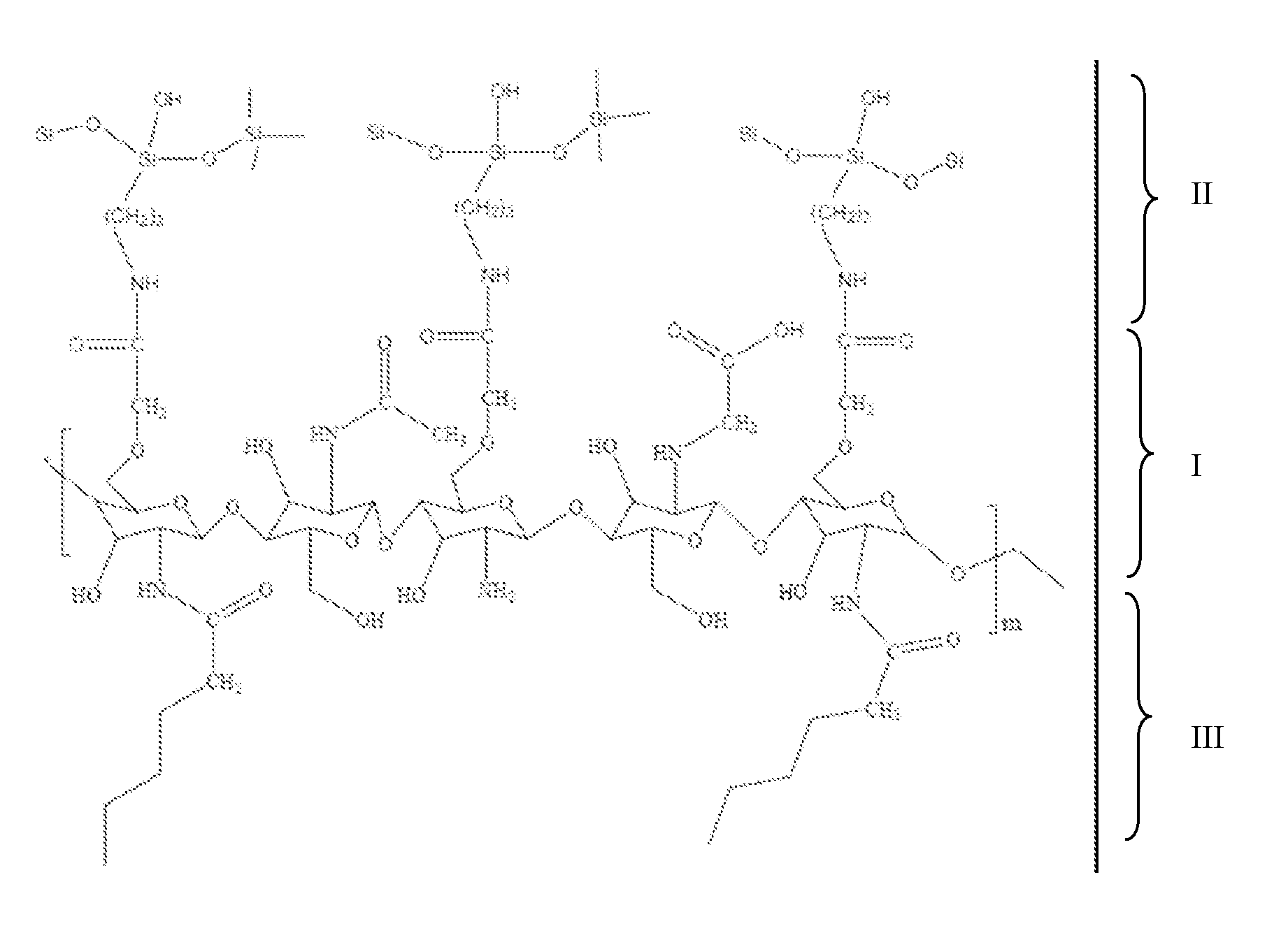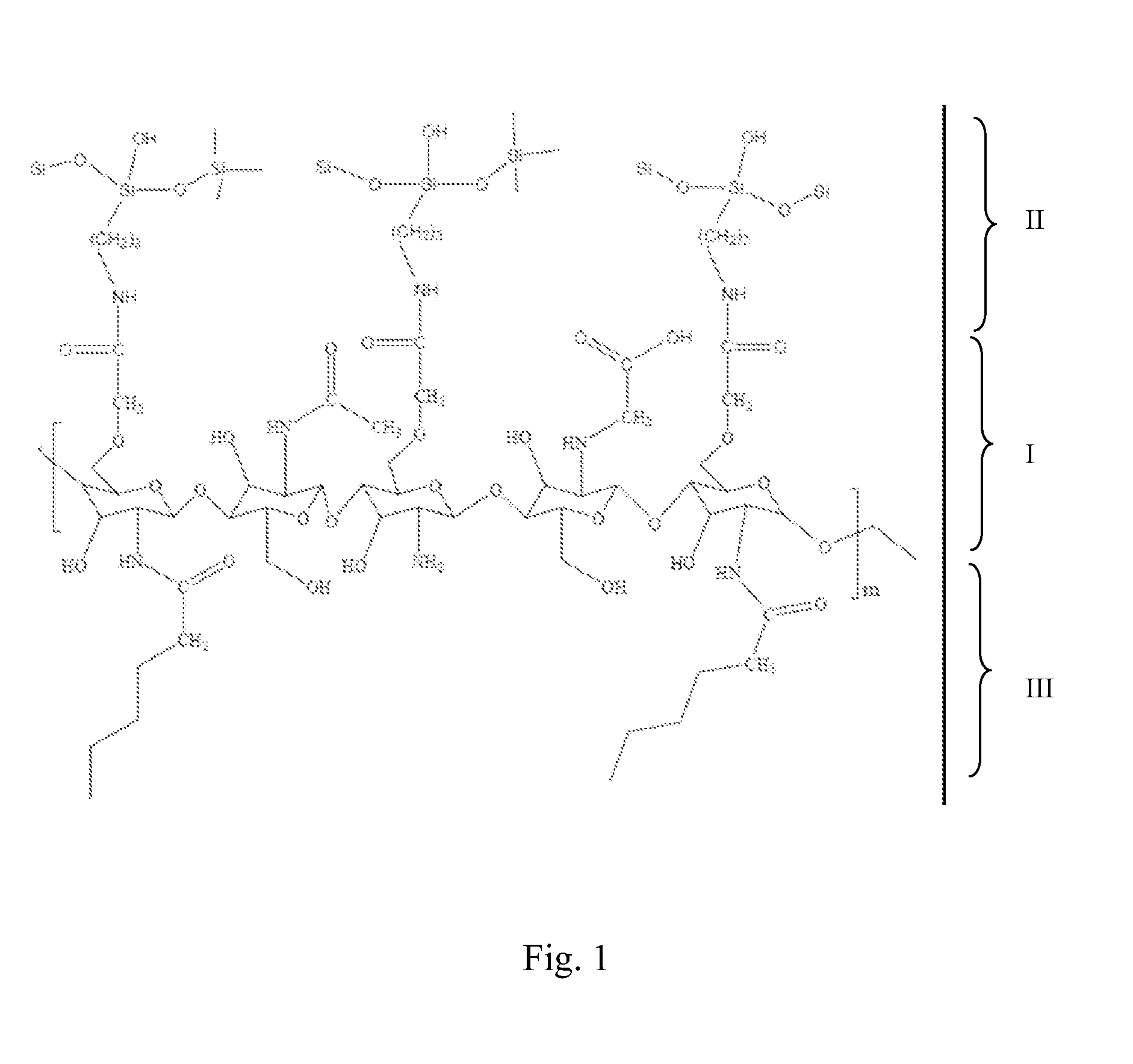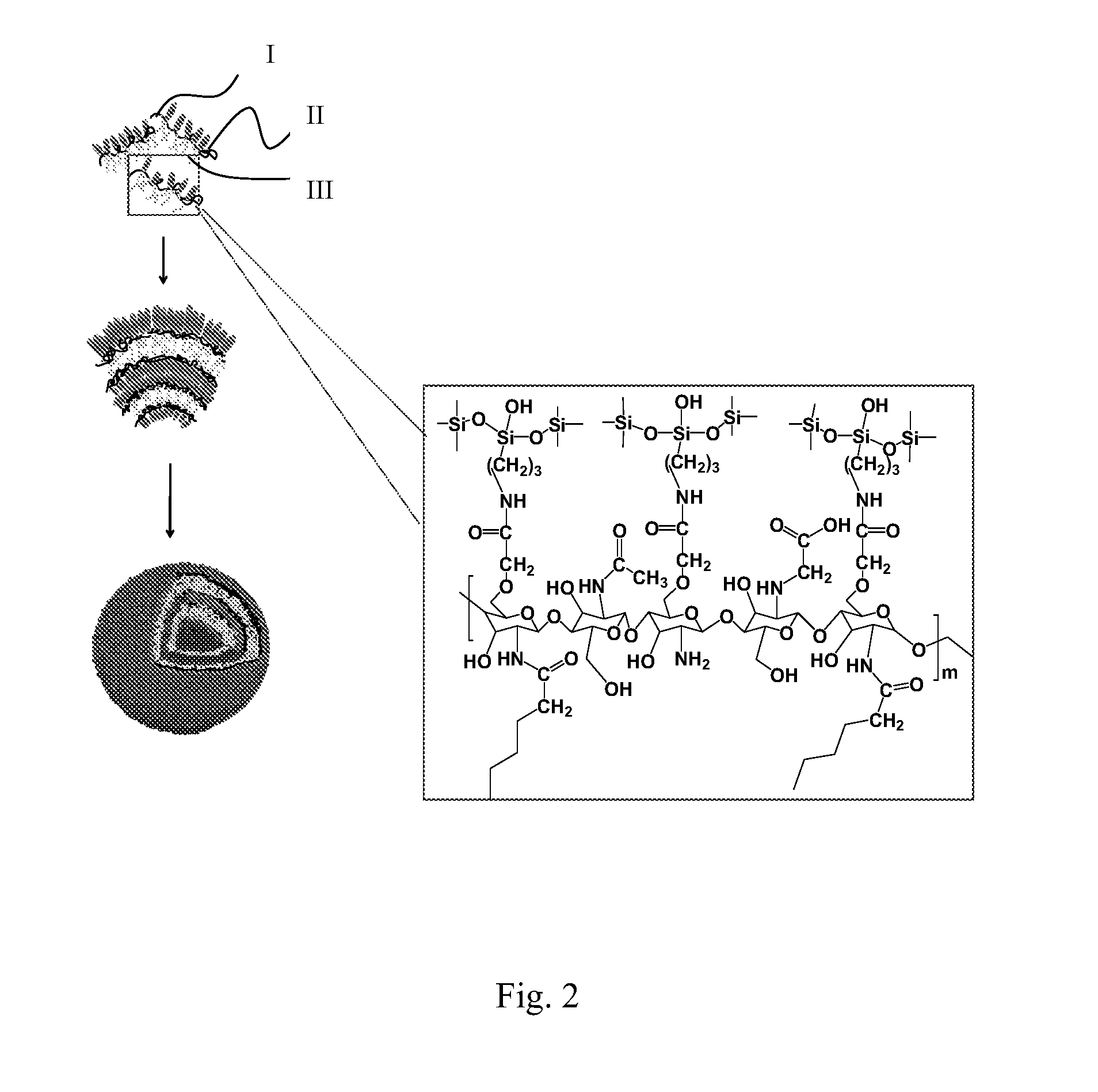New-type chitosan-based hybrid macromolecule and a method for producing or using the macromolecule
a hybrid macromolecule and macromolecule technology, applied in the field of new-type chitosan-based hybrid macromolecules and a method for producing or using macromolecules, can solve the problems of difficult control of the drug release from the carrier, difficult estimation of the actual release time and release amount of the drug, and drug leakage, etc., to achieve good cellular uptake efficiency, improve drug loading ability, and improve drug stability
- Summary
- Abstract
- Description
- Claims
- Application Information
AI Technical Summary
Benefits of technology
Problems solved by technology
Method used
Image
Examples
example 1
[0026]With reference to FIGS. 1 and 2, a new-type chitosan-based hybrid macromolecule in accordance with the present invention comprises an amphiphatic chitosan and a silicon-based inorganic coupling agent that is anchored by a chemical bond. The skeleton of the amphiphatic chitosan has a long carbon chain (I) and comprises a modified hydrophilic terminal (II) and a modified long-chain hydrophobic terminal (III). The hybrid macromolecule is an organic-inorganic hybrid molecule and is self-assembled in an aqueous environment to form a core-shelled micelle.
example 2
[0027]A method for producing a new-type chitosan-based hybrid macromolecule in accordance with the present invention uses 3-aminopropyltriethoxysilane (APTES) as the silicon-based inorganic coupling agent and comprises steps as following:
[0028]preparing an organic and amphiphatic chitosan solution: adding 0.25 grams organic and amphiphatic chitosan in 50 mL deionized water and stirring under ambient environment to form an organic and amphiphatic chitosan solution. The amphiphatic chitosan has a modified hydrophilic terminal and a modified hydrophobic terminal.
[0029]preparing an organic and inorganic complex solution: adding about 160 microleter (μL) inorganic APTES solution into the chitosan solution, stirring under nitrogen atmosphere and mixing well to form an organic and inorganic complex solution.
[0030]dialysis: placing the organic and inorganic complex solution in 75% (v / v) ethanol for 24 hours and then placing the organic and inorganic complex solution in a pure ethanol for 24...
example 3
[0037]In this example, a drug of (S)-(+)-camptothecin (CPT) is used to illustrate a method for using the hybrid macromolecule of the invention comprises steps of following:
[0038]preparing a drug solution: adding 20 mg CPT into 5 mL DMSO solution and mixing well to form a drug stock solution, and then diluting the drug stock solution by adding a deionizing water to a final concentration of 50 ug / mL and stirring at room temperature for 30 minutes to form a drug solution; and
[0039]preparing a drug-contained micelle: adding a hybrid macromolecule of the invention to the drug solution and stirring at room temperature for 24 hours to encapsulate the drug inside of the hybrid macromolecule to form a drug-contained micelle solution, and then centrifuging the drug-contained micelle solution at 8000 rpm at 20° C. and collecting and drying a pellet form the drug-contained micelle solution to gain the drug-contained micelle.
[0040]In the step of preparing a drug-contained micelle, the adding amo...
PUM
| Property | Measurement | Unit |
|---|---|---|
| diameter | aaaaa | aaaaa |
| thickness | aaaaa | aaaaa |
| diameter | aaaaa | aaaaa |
Abstract
Description
Claims
Application Information
 Login to View More
Login to View More - R&D
- Intellectual Property
- Life Sciences
- Materials
- Tech Scout
- Unparalleled Data Quality
- Higher Quality Content
- 60% Fewer Hallucinations
Browse by: Latest US Patents, China's latest patents, Technical Efficacy Thesaurus, Application Domain, Technology Topic, Popular Technical Reports.
© 2025 PatSnap. All rights reserved.Legal|Privacy policy|Modern Slavery Act Transparency Statement|Sitemap|About US| Contact US: help@patsnap.com



